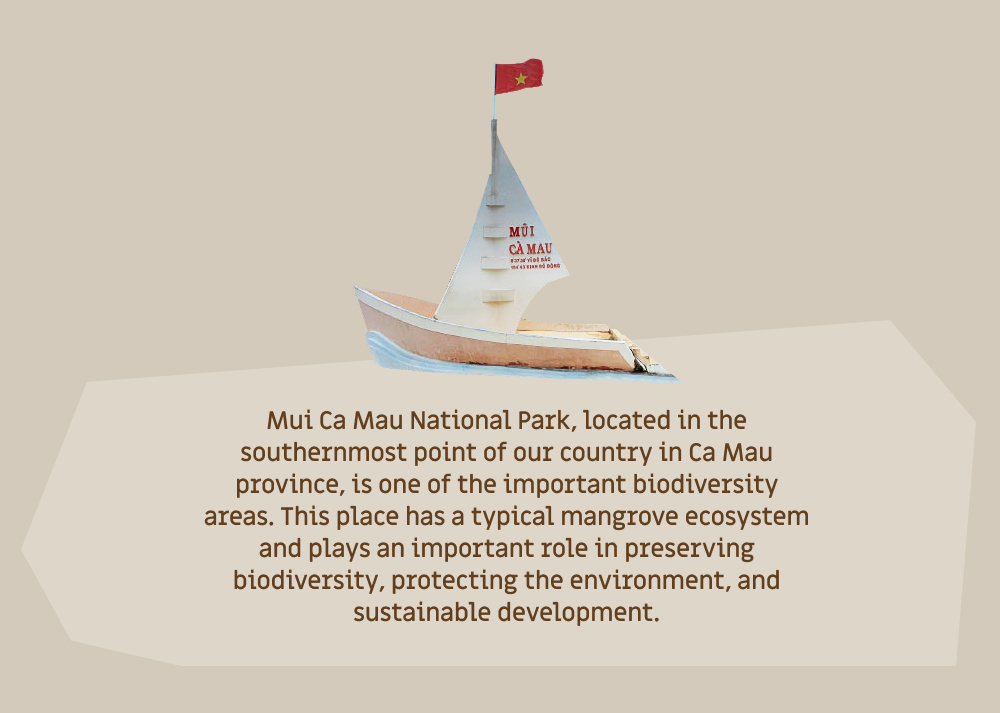
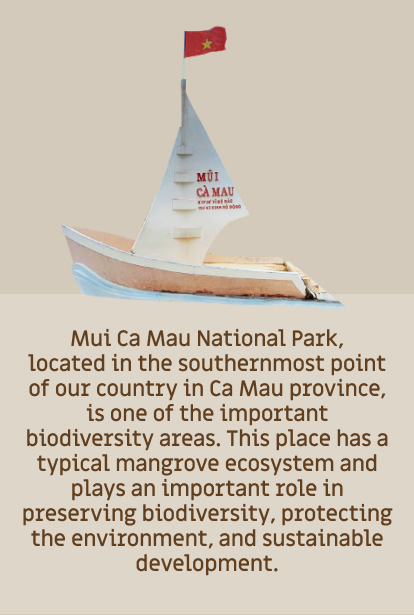

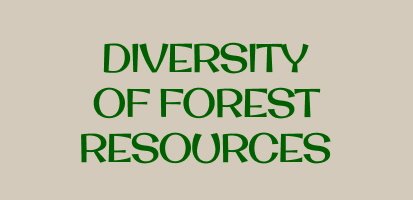
Mui Ca Mau National Park has a large area covered by mangrove forests, with many species of mangrove trees such as mangrove, black mangrove, cork, bruguiera, etc. These trees not only help prevent coastal erosion but also provide habitat for many animal species while supporting water filtration and maintaining ecological balance.
Mui Ca Mau is the largest primeval mangrove forest in our country, adjacent to both the East and West Seas, so it is influenced by two tidal currents at sea, including the semi-diurnal tide of the East Sea and the diurnal tide of the West Sea. That's why this place has a diverse seafood system, with many species of high economic value.
With a total land area of approximately 42,000 hectares, of which 15,260 hectares are land areas. The remaining 26,6000 hectares are land areas in contact with the coast, so Mui Ca Mau National Park is known as the largest primeval mangrove forest in Vietnam.
Mui Ca Mau mangrove forest has become a conservation place to help many rare and wild animals have a safe shelter. At the same time, the extremely "fertile" ecosystem under the forest canopy has created livelihoods for many generations of families.

The land of Ca Mau is blessed by nature, bestowing many products rich in both economic and cultural value of the alluvial land. Therefore, Ca Mau is known as the land of "golden forests, silver seas." It is this richness and fertility that has created an extremely fertile forest ecosystem, which few places have. Taking advantage of that potential and advantage, in many different ways, people in the mangrove area in Ngoc Hien district have clung to the forest for economic development. Thanks to that, many households have changed their fate, rising to become quite rich.
The mangrove ecosystem in Mui Ca Mau is assessed by experts as a young alluvial area, with the surface made up of sedimentary materials that were brought from the river, deposited in the coastal marine environment, and transferred to the maritime swamp environment. The Mui Ca Mau alluvial area has a very special tidal regime because it is adjacent to two sea areas with different tidal regimes.
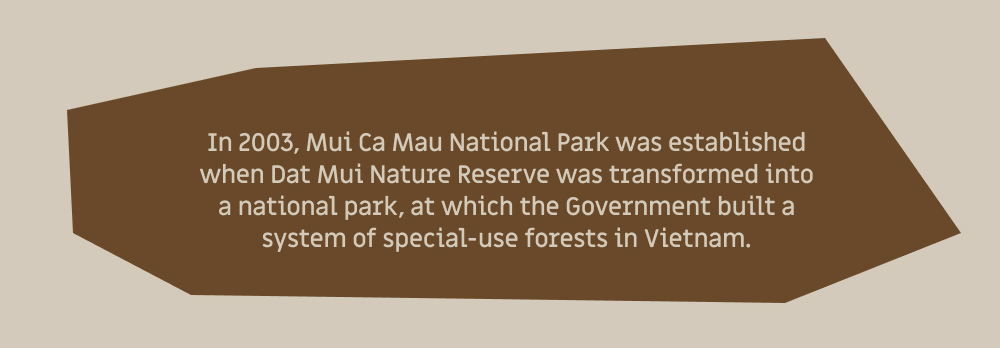
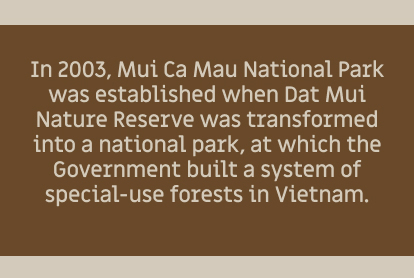
The East Coast has an irregular semi-diurnal tide regime, with a tidal amplitude of 2.5–3 m, while the West Coast is in the diurnal zone, with the magnitude of the tidal amplitude at high tide being 1-1.5 m. Tides in the east push tidal water deep inland, while tides in the west tend to draw tidal water out to sea. Thanks to this advantage, aquatic resources such as clams, oysters, mussels, wool snails, etc. also proliferate and develop, bringing high economic value.
Looking at the forests from afar, at the mudflat land when it was formed, the black mangrove tree species with a special root system and high salt tolerance is the first species to invade new mudflats, forming dense forest stands along the estuary. When these plants appear, they reduce the intensity of tidal waves, accelerating the process of alluvial deposition and causing the ground to rise. The materials that fall every year contribute to the rapid elevation of the ground. When the ground is stable, many different tree species will participate in the natural growth and development process of mangrove forests here.

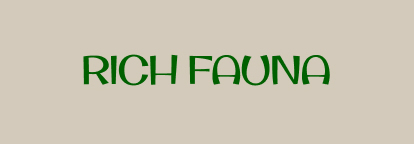
Mui Ca Mau National Park has diverse species of fish, shrimp, and crabs, with many species of high economic value such as elongate mudskipper, barramundi, giant tiger prawn, and saltwater crab. This place is also the residing and breeding place of many rare bird species, especially migratory water birds. Typical examples are stork, heron, pelican, and bird species of the Crane family.
Talking with us, Mr. Tiet Huu Thanh, Management Officer of Dat Mui Protection Forest in Ngoc Hien district, assessed that Ca Mau mangrove forests have very high ecological value, playing an important role in protection, wind resistance, and erosion prevention. The Ca Mau mangrove ecosystem plays an important role in ecological balance, maintaining water quality through functions such as storing soil, silt, and organic matter and filtering pollutants through trees and deposition processes.
"Under the influence of the flow of large rivers, it brings a clean water source rich in nutrients and larvae of many aquatic and seafood species to supply to the interior fields. From there, create a sustainable environment for Ca Mau province's aquaculture area of about 280,000 hectares, contributing to ensuring stable productivity for highly effective aquaculture strategies, comprehensive economic growth, and poverty reduction. Mui Ca Mau also has great potential for ecotourism, international cooperation, scientific research, etc. This is also a sacred land at the last point of the country that everyone wishes to visit once," Mr. Thanh shared with us.
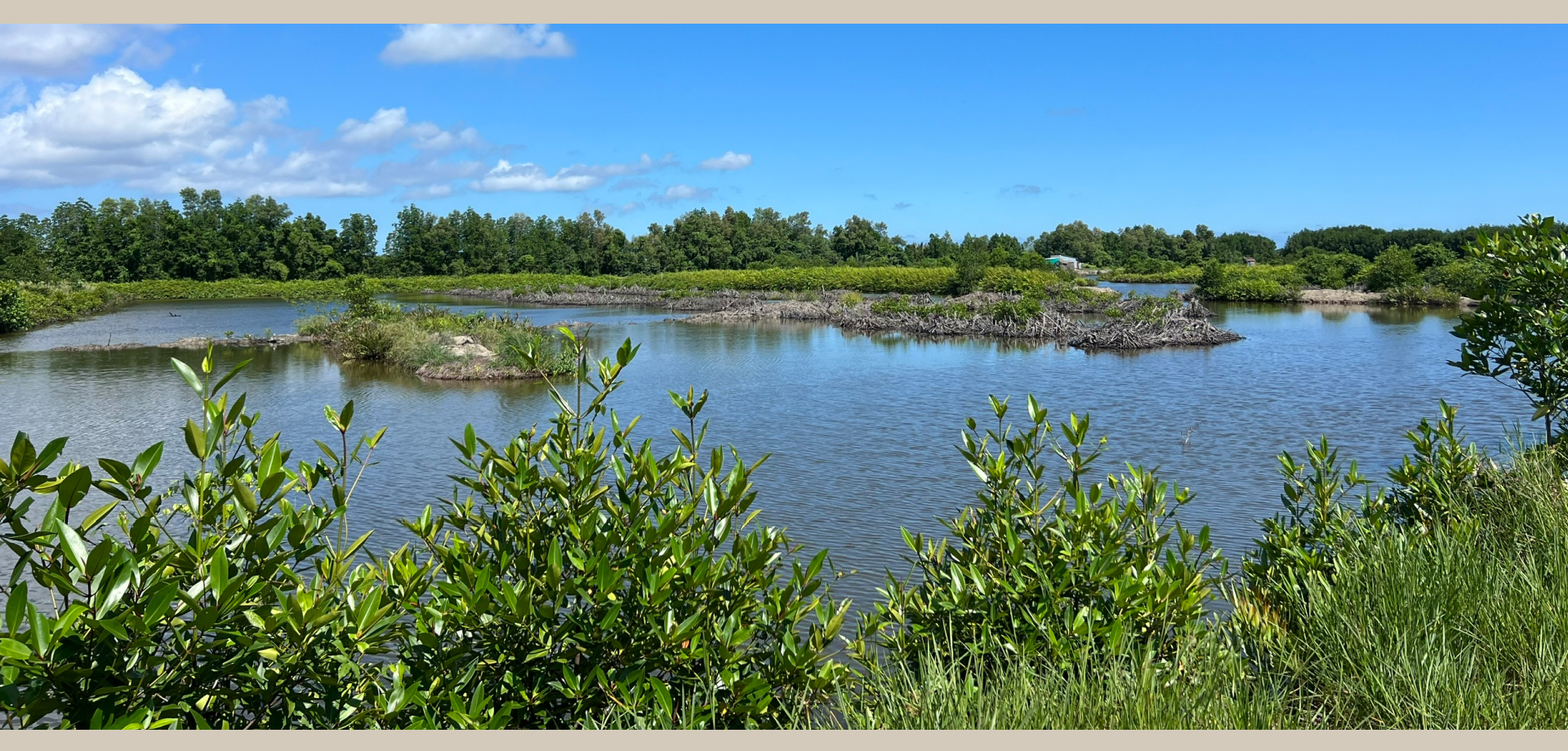
Under the impact of the two tidal regimes, silt is deposited, creating the proliferation and development of many valuable aquatic resources, such as sesarmid crab, wool snail, mussel, blood cockle, mud clam, giant mudskipper, etc. This is a natural resource, so it has high economic value. For the people under the forest canopy, these animal species are considered gifts from nature, or called "manna from heaven" by the human world, which have sustained them for many generations. There are even people who continue the family tradition by going to the forest to "pick manna" for many generations.
Sticking to the forest to make a living for many years, Mr. Ta Van Tho's family in Tan An commune, Ngoc Hien district, said: "The forest has fed my family. Thanks to the forest, my family can have delicious meals. For me, planting and restoring mangrove forests is a noble responsibility and is part of tree planting programs, especially typical tree species of mangrove forests such as mangrove, black mangrove, and cork. Mangrove trees help preserve soil, prevent erosion, and create a living environment for many species of creatures. Although the work is hard, we are independent and do not depend on anyone. If we are healthy, we work, but when we are tired, we rest.
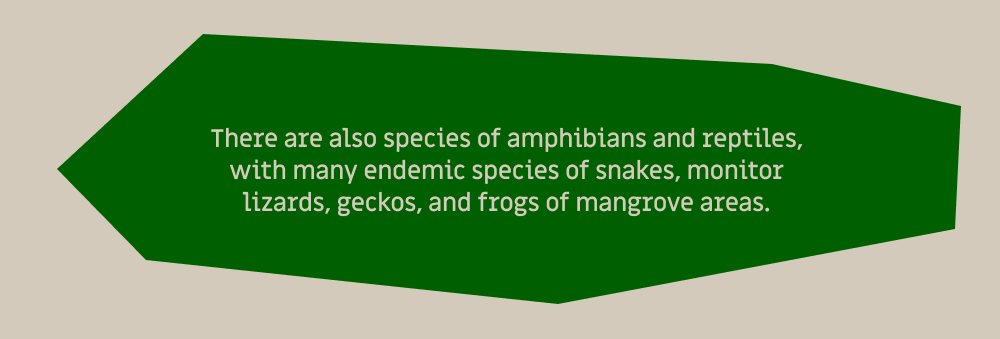

For the people in the mangrove forest land, the forest is a green lung, regulating fresh air. Thanks to the forest, people have more livelihoods and increased income. During difficult economic times, selling forest products is considered a stable job, increasing income to help people become more stable. Determining that forests are life and bring many economic values, every time I go to the forest, I always follow and strictly comply with regulations on forest protection.”
For Mr. Nguyen Van Dau's family in Ngoc Hien district, the ecosystem under the mangrove forest canopy is extremely diverse, creating many livelihoods for local working people. In this forest land, many people rely on the forest canopy to live. Most of them are working people who lack means of production.
“For me, the forest is like flesh and blood, keeping my family alive for many years. Now, when I am healthy, you go to the forest and you get money. If I am tired, I rest. For me, the forest is a source of life, so in addition to hunting for products, all people should contribute to preserving, protecting, and regenerating forest resources. As for me, I only catch products such as wool snails and mussels that reach the size. I do not catch those that are small or do not reach the size. This is the way I can contribute to regenerating resources in the forest ecosystem," Mr. Dau said.
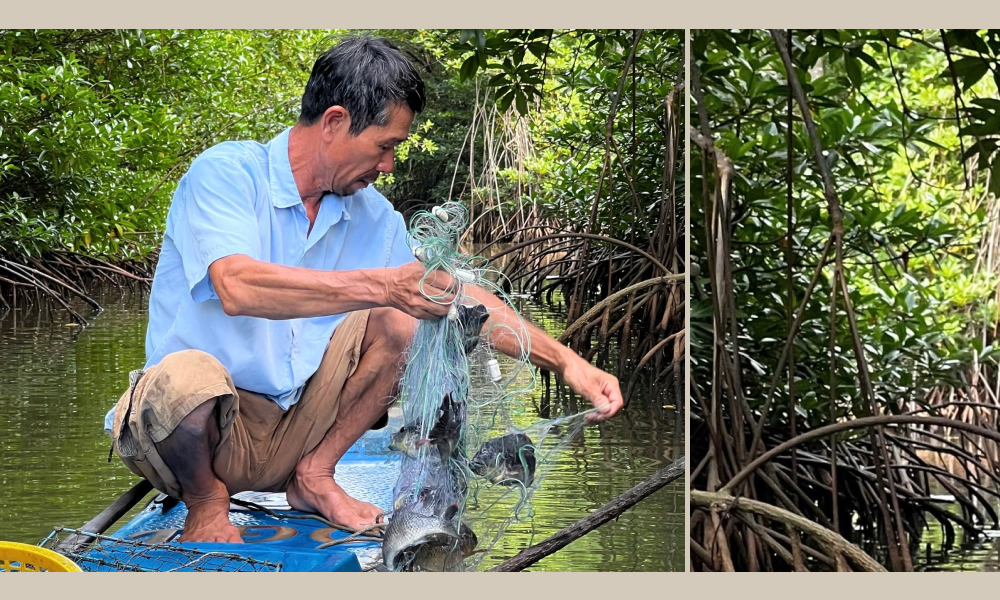
Ca Mau has a very diverse mangrove ecosystem, blessed by nature with many products of high economic value, such as blood cockle, wool snail, mud clam, sesarmid crab, mussel, etc. With this advantage, people choose to hunt forest products to improve their family's income while protecting the forest.
In the early days of September, the weather in the Southwest region had many spells of rain, but the livelihood of "woodmen" in Tan An commune, Ngoc Hien district (Ca Mau), still went on as usual. They are called "woodmen" because these people often get into the forest and are very professional in going to the forest, so they know the direction and are never afraid of getting lost. Eating and sleeping in the forest at noon is more common than at home. There are people who have stuck to daily life in the forest for decades. For them, the forest is their flesh and blood.
For more than 20 years, every day, at around 9:00 a.m., Mr. Tran Van Linh (44 years old, living in Tan An commune) and his wife prepared their tools and rice balls and traveled more than ten kilometers to go into the forest to catch woolsnails, mud clams, blood cockles, etc. The tools brought are quite simple, including a bucket, a hook (used to hook into deep caves to catch crabs), a pair of gloves, and food and drink for the day.
Many people share that they depend on nature here a lot for resources from the forest and sea, especially shrimp, fish, crabs, and trees in the mangrove forest. “Our lives are closely tied to the sea and forest. Without them, it would be difficult for us to make a living.”
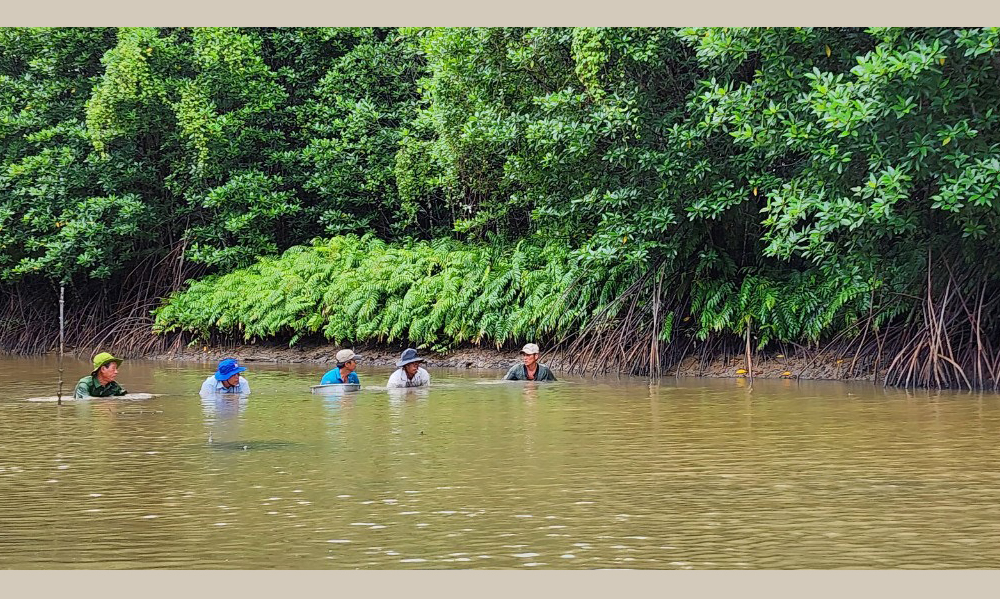
After preparing all the necessary tools, Mr. Linh started the engine, followed us along the river, and went straight into the forest, starting the journey to find forest products. The rattling sound of the engine took us deep into the forest, around more than 10 km of canals, and stopped next to the edge of the forest. After that, Mr. Linh waded into the mudflat and turned over the mud layer to look for the mud clam and mussel caves.
After nearly an hour of wandering through the mangrove forest, when we were tired, we stopped to drink water to "recharge energy." At this time, in the bucket brought, there were about 2 kg of "specialties" such as mussels, mud clams, wool snails, etc.
Sitting under the forest canopy to rest, Mr. Linh shared: "About 20 years ago, going to the forest was very good. There were days when my family did not have anything to eat. I went to the forest for a while and then came back with food for all day. Back then, I was only afraid of lacking rice because food was very easy to find."
Going back in memory, Mr. Linh said that in the years of 1990–2000, there were countless forest products in nature. Just going into the forest for a few hours could catch dozens of kilograms of wool snails, mud clams, and sesarmid crab. “At that time, they were mainly caught for food, not for sale. Over time, as life developed, forest products began to have value due to high consumer demand, so people went into the forest to catch and sell more and more. Now, the products from the forest are gradually decreasing, but we can still make a living," Mr. Linh said.
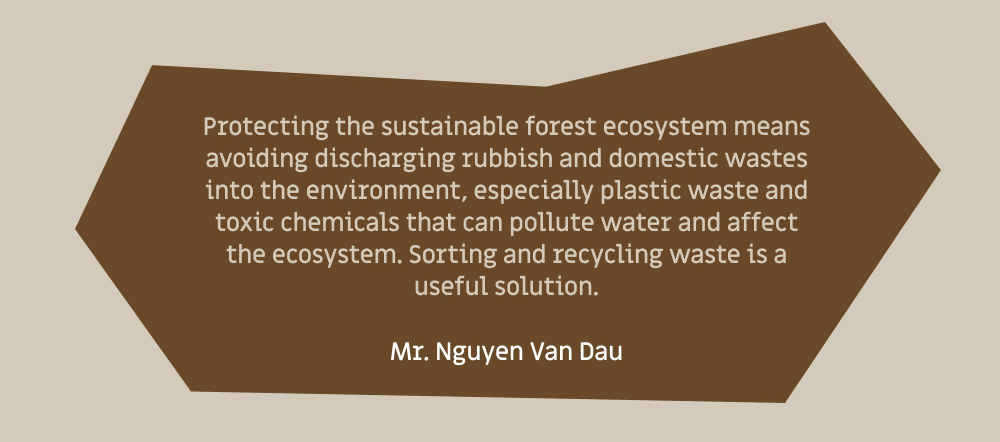
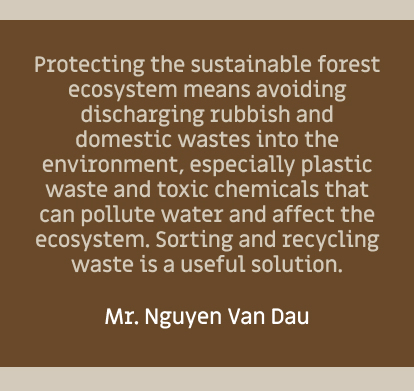
Every time they go into the forest, "woodmen" like Mr. Linh often bring incense to repel mosquitoes. The deeper we go into the forest, the more mosquitoes there are. If there is no incense smoke to repel mosquitoes, their bites cause very uncomfortable itching. "It is my decades of experience in the forest. There are a lot of mosquitoes in the deep forest, so without incense, they will suck all my blood," Mr. Linh said with a smile.
Mr. Nguyen Thanh Tuan, Tan An commune's fishery extension officer, said: "In the commune, there are currently about 30 households who make a living by going into the forest to catch snails, mud clams, etc. Besides, households also participate in activities to protect and monitor rare animal and plant species in the forest. People can coordinate with functional agencies and scientists to protect species that are at risk of being threatened or illegally hunted.
Talking about plans to regenerate, divide exploitation areas according to seasons, or stock regenerating seeds, Mr. Huynh Thanh Dam, Chairman of the People's Committee of Rach Goc town, Ngoc Hien district, said: "Forest products from nature today have become less and less. If there is no reasonable exploitation, the risk of extinction may occur. To regenerate forest product resources from nature, Ngoc Hien district's functional sector has coordinated with Can Tho University to research and successfully propagate reproductive sesarmid crabs. Currently, the locality is building a pilot farming model."
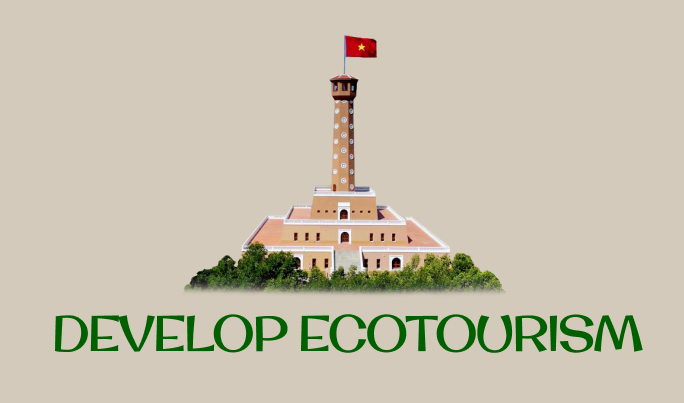
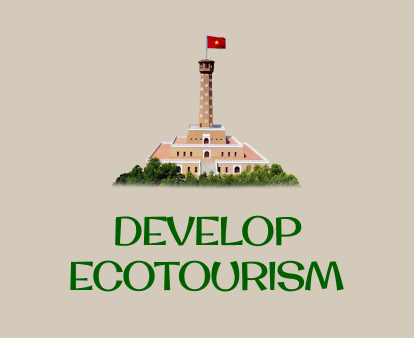
With special and very different potentials and advantages that are rarely found anywhere else, in addition to creating livelihoods for working people with diverse and extremely fertile resources, the mangrove ecosystem also helps people "make money" from ecotourism and community tourism businesses. These forms of tourism have been developing strongly in Mui Ca Mau for many years.
Mr. Huynh Van Lap, living in Ngoc Hien district, expressed: "The Ca Mau mangrove ecosystem is very diverse. Not only having the resources under the forest canopy that bring high economic value, this place is also a conservation place that helps many rare animals, such as otter, cobras, monkeys, etc., live and develop safely. In particular, with such a fertile ecosystem, many tourists love to visit Mui Ca Mau to visit and experience, especially activities through the forest, shrimp catching, wading into mud to catch crabs, giant mudskipper fishing, etc.”
Mr. Le Minh Ty, Director of Tu Ty Co., Ltd. in Ngoc Hien district, said: "Taking advantage of the forest, I boldly invested in the tourism business. Coming with ecotourism at Mui Ca Mau National Park, tourists can also participate in experiential activities such as netting and fishing and afforestation activities. Currently, there are many tourists who love and choose these experiences."
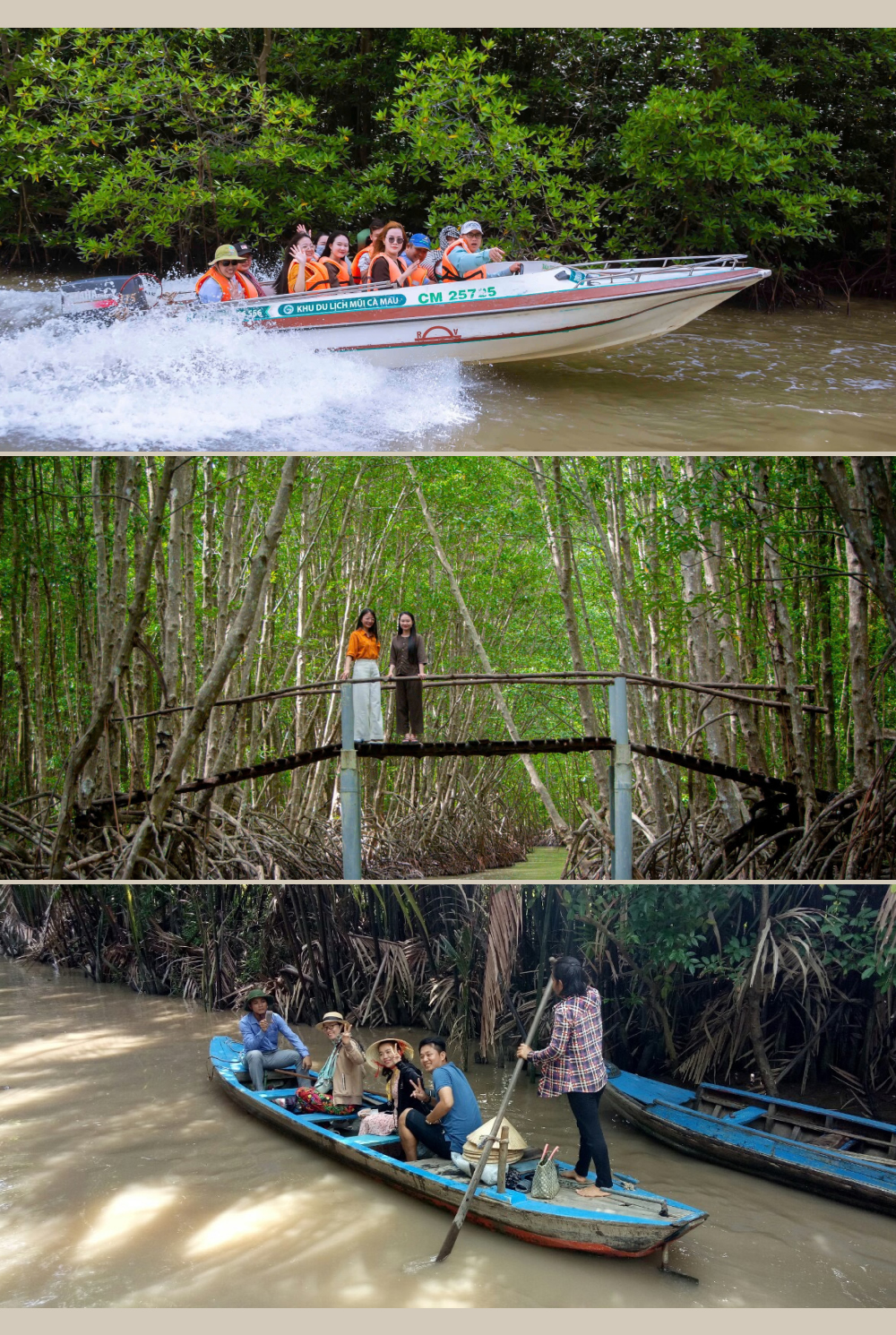
Talking about the potential and strengths of the forest ecosystem, Mr. Le Chi Thang, Head of the Department of Culture, Information and Sports of Ngoc Hien district, shared: "Ngoc Hien has many advantages to develop tourism with diverse and rich natural resources, especially abundant mangrove ecosystems that provide many livelihoods.
To promote those advantages, in recent times, the district has coordinated with Mui Ca Mau National Park and provincial-level functional agencies to organize the formation and exploitation of typical tourism products, such as opening tours through the forest (visiting the mangrove ecosystem, marine ecology, the flora and fauna living under the forest canopy, etc.). At the same time, effectively promote ecotourism and community tourism sites with many attractive products (organizing for tourists to explore the forest ecosystem in the shrimp square, spreading nets, etc.).”
According to the Head of the Department of Culture, Information and Sports of Ngoc Hien District, those tourism products represent the typical culture of the Ca Mau river region. "In recent times, the locality has always promoted its potential and boosted invitation work to attract many tourists inside and outside the province (including foreign countries) to visit, experience, and relax," Mr. Thang added. .
Mr. Phan Hoang Vu, Deputy Director of the Department of Agriculture and Rural Development of Ca Mau Province, assessed: The ecosystem of Mui Ca Mau National Park is very diverse; forest conservation in recent times has been very effective. The mangrove forest of Mui Ca Mau also contributes to protecting the coast of the Dat Mui area from landslides. In the western area of Dat Mui, mudflats have been formed, creating favorable conditions for people to plant forests.



